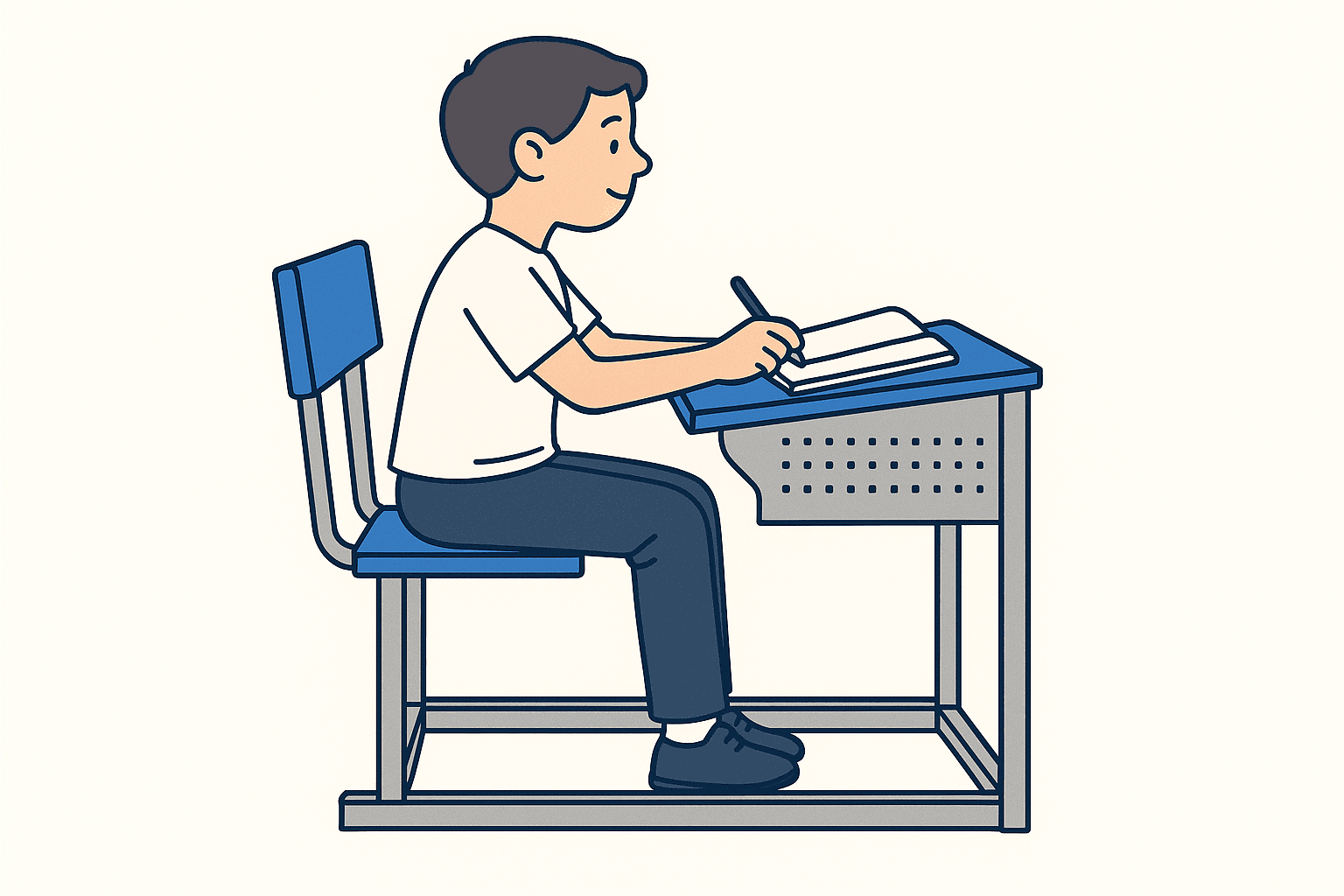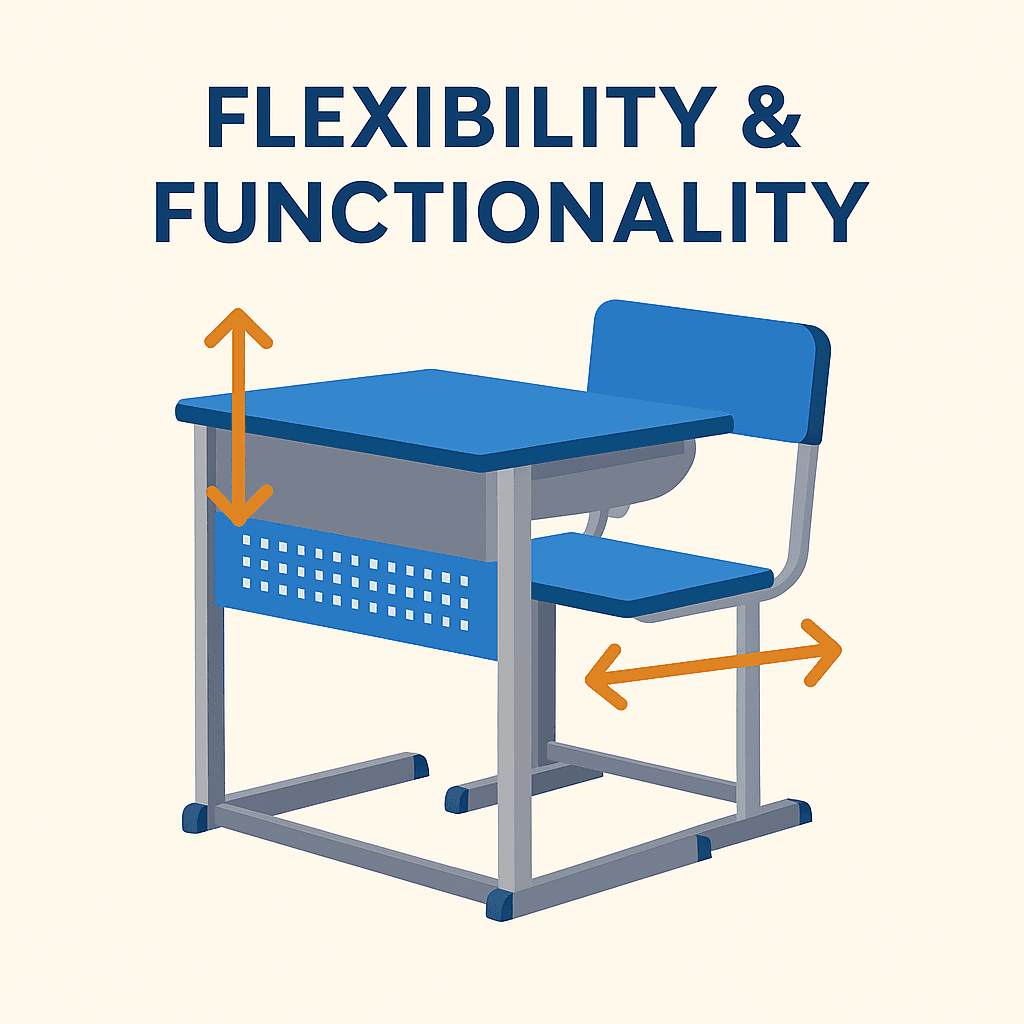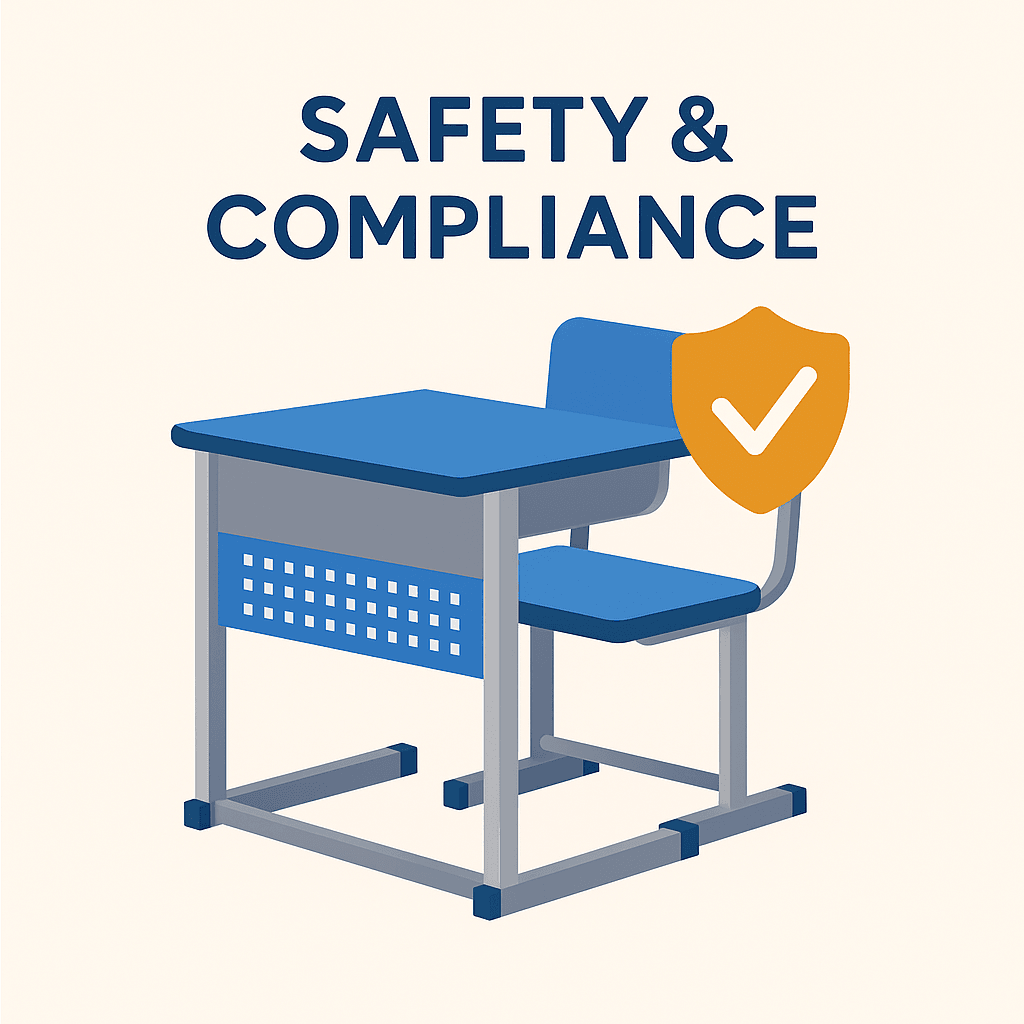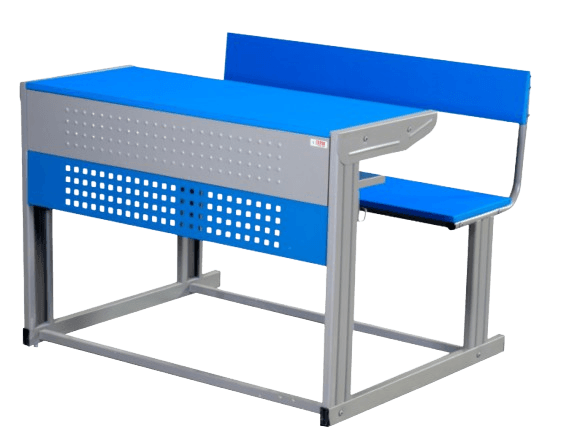School Furniture Buying Guide may seem like a simple task, but it is one of the most impactful decisions a school administrator can make. Furniture directly influences how students learn, how teachers teach, and how the overall educational environment is perceived. With the continuous shift in educational pedagogy, classrooms are no longer static rows of desks and chairs but dynamic environments that foster collaboration, creativity, and comfort.
As institutions invest in infrastructure, School Furniture Buying Guide should be treated as a priority rather than an afterthought. Not only should it serve a functional purpose, but it should also promote health, well-being, safety, and long-term value. In this extended guide, we take a deep dive into the five most important considerations school administrators should prioritize before making furniture purchases. We’ll also introduce our specially curated range of furniture solutions tailored for next-gen classrooms.
1. Ergonomics & Student Health
Students spend up to 6–8 hours a day sitting in classrooms. That equates to over 1,200 hours a year! Furniture that fails to support proper posture and comfort can lead to physical strain, poor concentration, and even long-term health issues. Ergonomics is not just a buzzword—it’s a necessity.
Key Considerations:
- Age-Appropriate Sizing: Furniture should be available in multiple sizes to accommodate primary, middle, and high school students. Desks too high or chairs too low can result in discomfort and distraction.
- Posture-Supportive Design: Desks and chairs should promote upright posture, with supportive backrests and seat curvature.
- Adjustability: Especially in mixed-grade classrooms or inclusive learning environments, adjustable desks and chairs can serve diverse needs.
- Material Comfort: Breathable materials, non-slip seats, and curved edges can reduce fatigue and increase safety.
Studies show that ergonomic School Furniture Buying Guide improves attention spans, academic engagement, and overall behavior. Comfortable students are more likely to remain focused and actively participate in lessons.

2. Durability & Material Quality: A School Furniture Buying Guide for Every Administrator
Durability defines the long-term value of your furniture investment. Schools are high-traffic environments where furniture is often subjected to rough use, frequent movement, and little downtime.
Key Considerations:
- Construction Materials: Choose powder-coated steel frames for strength and rust resistance, high-density laminated boards for surfaces, and UV-treated plastics for longevity.
- Joints & Fasteners: Welded joints tend to last longer than riveted ones. Ensure the load-bearing parts of furniture are reinforced.
- Surface Coating: Laminate or melamine coatings protect against scratches, ink stains, and cleaning chemicals.
- Weight Tolerance: Furniture should be tested for real-world loads, especially in labs or science classrooms where equipment is used.
Durable furniture reduces the cost and effort of frequent repairs, replacements, and maintenance calls. A slightly higher upfront investment can save years of hassle and expense.

3. Flexibility & Functionality: A School Furniture Buying Guide for Every Administrator
Today’s classrooms support diverse teaching styles—from lectures and one-on-one mentoring to collaborative group projects. Flexible furniture accommodates this by allowing spaces to transform as needed.
Key Considerations:
- Mobility: Furniture with castor wheels or lightweight frames allows teachers to easily reconfigure layouts.
- Stackability: Stackable chairs and desks simplify storage and facilitate quick classroom resets.
- Modular Configurations: Desks and benches should connect, align, or move apart depending on the activity.
- In-Built Storage: Desks with wire baskets or under-seat racks minimize clutter and encourage personal organization.
- Convertible Designs: Foldable desks and multipurpose tables allow classrooms to serve multiple purposes, such as hosting workshops, exams, or parent-teacher meetings.
Flexible spaces empower educators to adapt their teaching approach to student needs. School Furniture Buying Guide should support—not restrict—the learning journey.

4. Safety & Compliance Essentials: A School Furniture Buying Guide for Every Administrator
In an environment centered around children and young adults, safety should never be compromised. From design elements to construction materials, school furniture must meet rigorous safety and compliance standards.
Key Considerations:
- Edge Protection: Rounded corners or edge banding reduce injuries caused by accidental bumps or falls.
- Anti-Tipping Stability: Wide-legged chairs and fixed desks reduce the risk of overturning, especially among active younger students.
- Non-Toxic Finishes: Paints, coatings, and adhesives used in furniture should be certified non-toxic and low in VOCs (volatile organic compounds).
- Fire Retardancy: Some institutions require fire-resistant materials, particularly in laboratories or science classrooms.
- Certified Compliance: Look for ISO, ANSI/BIFMA, or local safety certifications.
Well-designed safety features enhance the learning environment and build trust among students, parents, and faculty alike.

5. Aesthetics & Institutional Branding: A School Furniture Buying Guide for Every Administrator
The look and feel of a classroom affect how students perceive their school. Bright, modern, and well-coordinated furniture can make a space feel more inviting, engaging, and professional.
Key Considerations:
- Color Psychology: Bright hues can energize a classroom, while calm tones can aid focus. Consider using a color palette aligned with your school’s theme.
- Brand Integration: Incorporate your institution’s logo, motto, or mascot onto desk panels or wall-mounted boards.
- Design Consistency: Uniform furniture style across classrooms, labs, and libraries enhances the overall professional image of your institution.
- Custom Themes: Some institutions design thematic rooms (e.g., STEM labs, digital learning hubs, art studios) with matching furniture.
When aesthetics meet functionality, the School Furniture Buying Guide that inspires pride, promotes productivity, and leaves a lasting impression on visitors.

Furniture
At [ Jiph furniture ], we specialize in furniture solutions that check all the boxes. Whether you’re equipping a new campus or upgrading existing infrastructure, our range is designed to provide ergonomic comfort, lasting durability, safety, and aesthetic value.
Our Signature Products
📚 Scholar-90 (Dual-Seater Bench + Desk Combo)
- Features a sturdy powder-coated frame, built-in footrest, and smart storage.
- Designed for grades 5 to 10 with easy maintenance surfaces.
- Available in customizable color palettes.
📝 Scholar-37 (Single Compact Desk + Chair)
- Space-efficient and perfect for small rooms or remedial classes.
- Under-desk wire basket and ergonomic back support.
- Non-slip leg pads and lightweight build for easy movement.
🏢 OrbitDesk Newgen (High-Tech Training/College Desk)
- Premium double-seater with full front panels and branding space.
- Anchored base, laser-cut side supports, and integrated storage options.
- Ideal for seminar halls, computer labs, and institutional classrooms.
Why Choose Us?
- ISO & Safety Certified
- End-to-End Logistics & Installation
- Custom Configuration & Finish Options
- Bulk Discounts & Layout Planning Support
Q&A: Frequently Asked Questions from School School Furniture Buying Guide Admins
Q: What makes furniture “education-grade”?
A: Education-grade furniture is purpose-built for school environments, ensuring durability, safety, and ergonomic support for students.
Q: Can furniture be customized to match our branding?
A: Absolutely. We offer panel branding, logo etching, and custom color finishes to reflect your school identity.
Q: How does your team support planning and layout?
A: We provide free space analysis, 2D/3D classroom layouts, and volume optimization to maximize your available area.
Q: Are your materials eco-friendly?
A: Yes. We use recyclable materials, non-toxic paints, and sustainable wood sources to support green schools.
Q: Do you offer AMCs or service support?
A: Yes, we offer annual maintenance contracts, service visits, and replacement guarantees on select ranges.
Conclusion: Invest in Learning Environments that Work
Furniture is more than infrastructure—it’s a catalyst for academic excellence. By focusing on ergonomics, durability, flexibility, safety, and aesthetics, school administrators can create classroom spaces that truly serve their communities.
With the right partner, this process becomes not only easy but also inspiring. At [JIPH FURNITURE], we’re proud to contribute to the future of education through thoughtfully designed, quality-crafted furniture solutions.
Contact us today for a personalized consultation, catalog request, or demo session. Let’s build a better learning space together.
Published by [team jiph furniture ]
Innovators in smart educational infrastructure.


